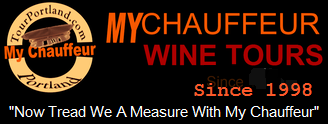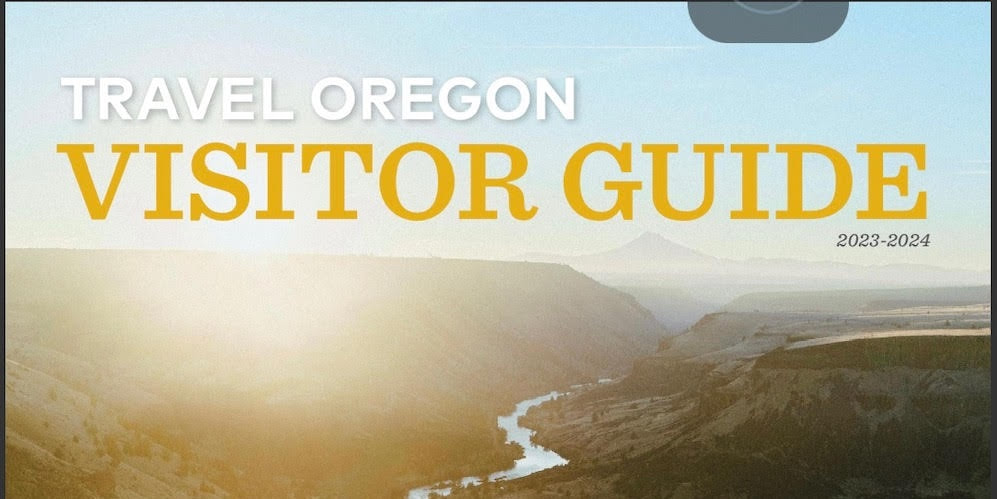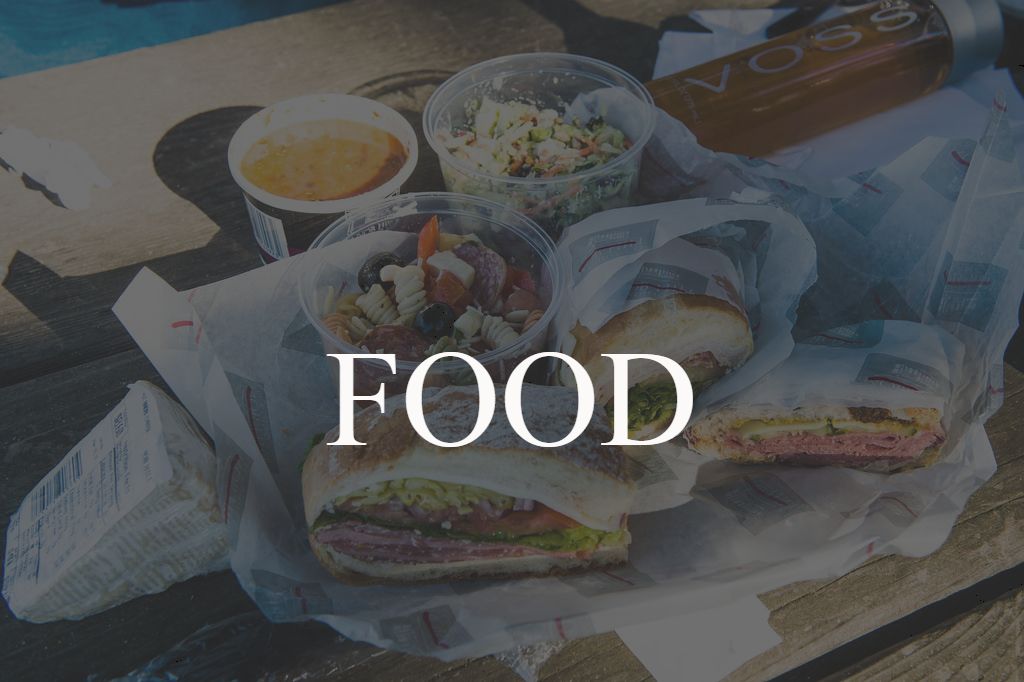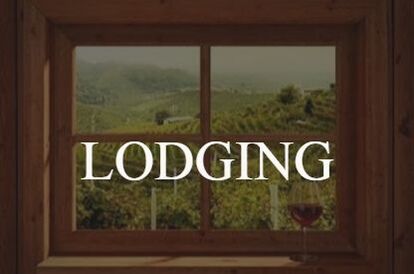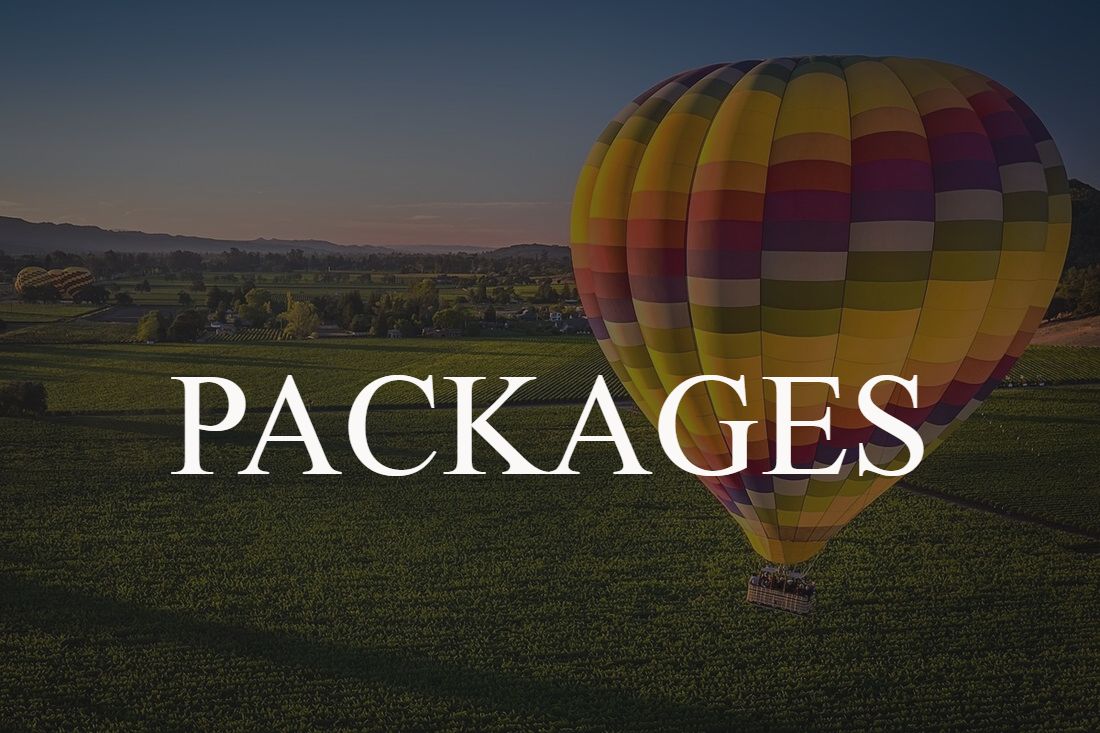Wine 101: An Oenophilic Cheat Sheet
From biodynamic to brix to spitting & dumping to Do's & Don'ts; school yourself before you sip.
What is biodynamic?
Biodynamic vineyards are a lot like organic ones—plus mineral and herbal “preparations” and astrological influences (ley lines, lunar planning). Oregon has about 1-2 dozen wineries/vineyards certified by the biodynamic standards organization Demeter.
What is natural wine?
“Natural” wine lacks strict definition, beyond the winemaker’s minimal intervention in the fermentation process and typical rejection of additives like sugar. The result can be funky, off-color, and (sometimes) really fun. In Oregon we call this LIVE (Low Input Viticulture & Enology) or Salmon-Safe.
What is orange wine?
Orange wine—contains no oranges!—owes its tawny color to (normally taboo) contact between just-crushed white wine grapes and their skins. More
What is brix?
Brix is a unit of measurement for the sugar in wine grapes. Brix levels are collected at harvest, and sometimes again after pressing, to gauge the potential booziness of the resulting wine.
American Viticultural Areas:
Much like a French appellation, an AVA is an area federally designated as geographically distinct for grape cultivation. Oregon has 17 AVAs, four of which stretch into neighboring states.
The Willamette Valley AVA:
Between 2004 and 2006, six parts of the Willamette Valley AVA (established in 1983) became their own subappellations. The newest of these are Chehalem Mountains and Eola-Amity Hills and in 2018, the Van Duzer Cooridor. The N. Willamette Valley has 8 AVAs.
Oregon wine: on trend
Nationally, Oregon wine sales in 2016–2017 are up 17 percent from the previous period, beating out California and Washington (up just 3 and 2.3 percent, respectively). Named THE BEST in the world for 2016.
Oregon pinot: still number one
Approximately 67 percent of Oregon vineyard production is pinot noir, with nearly 51,000 tons of fruit harvested annually.
Don't be scared of a little wine tasting - Reproduced with permission from Discover Yamhill Valley -
Edited by Philip Colby of My Chauffeur
Go ahead … spit it out!
No really. Wine tasting novices may find this advice suspect, since polite people are told not to spit in public. Then, suddenly, a situation arises in which it’s expected. Uncomfortable, isn’t it?
But spittoons and dump buckets are part of the tasting room experience.
New to wine? Tasting rooms are a great place to learn. It’s a welcoming experience, it’s fun and ever so delicious. Never been? Chances are, you aren’t the only newbie there. The people who pour in Yamhill Valley (N. Willamette Valley) are here to help you get comfortable.
Allan Carter of Domaine Serene wants you to ask tons of questions. In fact, the Domaine Serene tasting room is set up to encourage this, with a smattering of tables instead of a single bar, giving tasters better access to the pourers. Those people are there to tell you about the wine, so ask away.
Becky Rochester of Willamette Valley Vineyards offers an important piece of advice: “Be adventurous.” The purpose of a tasting room is to have “your perception of wine educated.” Try everything that’s on offer, she says. For example, don’t turn down a flight of Rieslings because you expect them to be sweet; not all of them are.
But if what you’re offered isn’t something you’re dying to drink a lot of, dump it out. She won’t mind. Neither will Linda Lenyo of Twelve.
“We’re really, truly not offended by people using the dump and spit buckets,” Lenyo says. “We respect that everyone’s tastes are unique.” She would rather you walk out of her tasting room on Third Street in McMinnville thinking, “that was fun but not for me,” than leave feeling uncomfortable.
Maria Stuart of R. Stuart and Co. Wine Bar echoes the pro-dumping-out-wine sentiment. “It is definitely, completely appropriate. Wine professionals spit when they taste,” she says.
Sometimes those tasting room pours can look a little generous. Wasteful though it may seem, leave your glass on the bar and let ’em pour. You can dump it out later if you can’t finish. As Stuart explains, “you need to get enough wine in the glass to get the sensory experience. Take a moment, enjoy it, and pour the rest out” if you need to. It takes between one and two ounces in the glass to give a taster a fair idea of what the grape has to offer.
Comfortable with the idea of dumping out wine? Ready to find out what the 2008 and 2009 wines are like? Good. Let’s move on. Yamhill Valley wine professionals generously shared their tasting room advice.
Do's
• Do realize the person pouring may know a lot about that wine. People are often “pleasantly surprised by the fact that they’re talking to people who are intimately connected to the wine they’re pouring,” Lenyo says.
• Do call ahead, particularly if you’re bringing a large group.
• Do buy a bottle if you like the wine. Don’t be shy to pick the cheapest one. Spring for about $20-$30. If you’re in a group, it’s a real bargain. If you were paying for a tasting, you’d be expected to shell out $10-20 a head. Oregon wines tend to be expensive just like their sisters over there in Burgundy (and for the same reasons) where some of the most expensive wines on the planet come from.
• Do bring a notepad and pen. Most wineries will give you a tasting list and something to write with, but it doesn’t hurt to be prepared.
• Do have a designated driver – because you’ll likely be offered 10-20 wines to sample.
• Do skip the lipstick. It’s really hard to clean from the rim of the glass. Plus, you look so pretty without it.
• Do ask questions. As Maria Stuart says, “if you know nothing about wine, you should feel comfortable asking questions.” Allan Carter echoes the sentiment: “The person pouring isn’t doing it for the money. They’re doing it because they love wine and love to talk about it.”
Get the Most From Your Winery Visits
Don'ts
• Don’t wear perfume, cologne or any strong fragrances. Other tasters may be sensitive to smells and it could kill their experience.
• Don’t bring along coffee. You just won’t get the full flavor of the wine.
• Don’t chew gum.
• Don’t smoke. Sure, sure – we’re worried about your health. But, really, it’s about your tastebuds.
• Don’t be offended if you’re asked to show ID.
• Don’t pull away a glass to prevent a pour, or pop your glass upward to stop a pour in progress. It’s really hard to pour wine into a moving target. And that’s such a nice shirt. Let’s not ruin it.
A couple of ground rules to remember:
1. It’s best NOT to drink water between glasses of wine (unless you’re really thirsty) – water rinses the mouth too clean, and can leave a taste of chlorine or bleach in your mouth. It's not necessary to rinse your glass between wines of the same color, but do rinse if you change from red to white wine, so as not to tint the color of the white wine with the leftover drops of red wine;
2. Hold the wine glass by the foot or the stem, never the bowl of the glass. If you hold it by the bowl, you cannot see the wine, and you will also heat the wine, which will change it’s characteristics.
3. Taste silently and note your impressions. You’ll share them later with your colleagues, but for now you don’t want to be influenced by their reactions, you want to note YOUR reactions. Trust your initial reactions, they are usually the most accurate.
4. There are NO wrong answers! Everyone has their own perceptions, and there is usually a good reason if you come up with an aroma or a taste that no one else came up with. Go with your gut, and know that the more you taste, the more precise your responses will become.
5. Use simple words & have fun with My Chauffeur's Easy Wine Descriptor.
Wine tasting descriptors - The use of wine tasting descriptors allows the taster an opportunity to put into words the aromas and flavors that they experience and can be used in assessing the overall quality of wine. Many wine writers, like Karen MacNeil in her book The Wine Bible, note that the difference between casual drinkers and serious wine tasters is the focus and systematic approach to tasting wine with an objective description of what they are sensing.
NEXT - How to Taste Wines
What is biodynamic?
Biodynamic vineyards are a lot like organic ones—plus mineral and herbal “preparations” and astrological influences (ley lines, lunar planning). Oregon has about 1-2 dozen wineries/vineyards certified by the biodynamic standards organization Demeter.
What is natural wine?
“Natural” wine lacks strict definition, beyond the winemaker’s minimal intervention in the fermentation process and typical rejection of additives like sugar. The result can be funky, off-color, and (sometimes) really fun. In Oregon we call this LIVE (Low Input Viticulture & Enology) or Salmon-Safe.
What is orange wine?
Orange wine—contains no oranges!—owes its tawny color to (normally taboo) contact between just-crushed white wine grapes and their skins. More
What is brix?
Brix is a unit of measurement for the sugar in wine grapes. Brix levels are collected at harvest, and sometimes again after pressing, to gauge the potential booziness of the resulting wine.
American Viticultural Areas:
Much like a French appellation, an AVA is an area federally designated as geographically distinct for grape cultivation. Oregon has 17 AVAs, four of which stretch into neighboring states.
The Willamette Valley AVA:
Between 2004 and 2006, six parts of the Willamette Valley AVA (established in 1983) became their own subappellations. The newest of these are Chehalem Mountains and Eola-Amity Hills and in 2018, the Van Duzer Cooridor. The N. Willamette Valley has 8 AVAs.
Oregon wine: on trend
Nationally, Oregon wine sales in 2016–2017 are up 17 percent from the previous period, beating out California and Washington (up just 3 and 2.3 percent, respectively). Named THE BEST in the world for 2016.
Oregon pinot: still number one
Approximately 67 percent of Oregon vineyard production is pinot noir, with nearly 51,000 tons of fruit harvested annually.
Don't be scared of a little wine tasting - Reproduced with permission from Discover Yamhill Valley -
Edited by Philip Colby of My Chauffeur
Go ahead … spit it out!
No really. Wine tasting novices may find this advice suspect, since polite people are told not to spit in public. Then, suddenly, a situation arises in which it’s expected. Uncomfortable, isn’t it?
But spittoons and dump buckets are part of the tasting room experience.
New to wine? Tasting rooms are a great place to learn. It’s a welcoming experience, it’s fun and ever so delicious. Never been? Chances are, you aren’t the only newbie there. The people who pour in Yamhill Valley (N. Willamette Valley) are here to help you get comfortable.
Allan Carter of Domaine Serene wants you to ask tons of questions. In fact, the Domaine Serene tasting room is set up to encourage this, with a smattering of tables instead of a single bar, giving tasters better access to the pourers. Those people are there to tell you about the wine, so ask away.
Becky Rochester of Willamette Valley Vineyards offers an important piece of advice: “Be adventurous.” The purpose of a tasting room is to have “your perception of wine educated.” Try everything that’s on offer, she says. For example, don’t turn down a flight of Rieslings because you expect them to be sweet; not all of them are.
But if what you’re offered isn’t something you’re dying to drink a lot of, dump it out. She won’t mind. Neither will Linda Lenyo of Twelve.
“We’re really, truly not offended by people using the dump and spit buckets,” Lenyo says. “We respect that everyone’s tastes are unique.” She would rather you walk out of her tasting room on Third Street in McMinnville thinking, “that was fun but not for me,” than leave feeling uncomfortable.
Maria Stuart of R. Stuart and Co. Wine Bar echoes the pro-dumping-out-wine sentiment. “It is definitely, completely appropriate. Wine professionals spit when they taste,” she says.
Sometimes those tasting room pours can look a little generous. Wasteful though it may seem, leave your glass on the bar and let ’em pour. You can dump it out later if you can’t finish. As Stuart explains, “you need to get enough wine in the glass to get the sensory experience. Take a moment, enjoy it, and pour the rest out” if you need to. It takes between one and two ounces in the glass to give a taster a fair idea of what the grape has to offer.
Comfortable with the idea of dumping out wine? Ready to find out what the 2008 and 2009 wines are like? Good. Let’s move on. Yamhill Valley wine professionals generously shared their tasting room advice.
Do's
• Do realize the person pouring may know a lot about that wine. People are often “pleasantly surprised by the fact that they’re talking to people who are intimately connected to the wine they’re pouring,” Lenyo says.
• Do call ahead, particularly if you’re bringing a large group.
• Do buy a bottle if you like the wine. Don’t be shy to pick the cheapest one. Spring for about $20-$30. If you’re in a group, it’s a real bargain. If you were paying for a tasting, you’d be expected to shell out $10-20 a head. Oregon wines tend to be expensive just like their sisters over there in Burgundy (and for the same reasons) where some of the most expensive wines on the planet come from.
• Do bring a notepad and pen. Most wineries will give you a tasting list and something to write with, but it doesn’t hurt to be prepared.
• Do have a designated driver – because you’ll likely be offered 10-20 wines to sample.
• Do skip the lipstick. It’s really hard to clean from the rim of the glass. Plus, you look so pretty without it.
• Do ask questions. As Maria Stuart says, “if you know nothing about wine, you should feel comfortable asking questions.” Allan Carter echoes the sentiment: “The person pouring isn’t doing it for the money. They’re doing it because they love wine and love to talk about it.”
Get the Most From Your Winery Visits
Don'ts
• Don’t wear perfume, cologne or any strong fragrances. Other tasters may be sensitive to smells and it could kill their experience.
• Don’t bring along coffee. You just won’t get the full flavor of the wine.
• Don’t chew gum.
• Don’t smoke. Sure, sure – we’re worried about your health. But, really, it’s about your tastebuds.
• Don’t be offended if you’re asked to show ID.
• Don’t pull away a glass to prevent a pour, or pop your glass upward to stop a pour in progress. It’s really hard to pour wine into a moving target. And that’s such a nice shirt. Let’s not ruin it.
A couple of ground rules to remember:
1. It’s best NOT to drink water between glasses of wine (unless you’re really thirsty) – water rinses the mouth too clean, and can leave a taste of chlorine or bleach in your mouth. It's not necessary to rinse your glass between wines of the same color, but do rinse if you change from red to white wine, so as not to tint the color of the white wine with the leftover drops of red wine;
2. Hold the wine glass by the foot or the stem, never the bowl of the glass. If you hold it by the bowl, you cannot see the wine, and you will also heat the wine, which will change it’s characteristics.
3. Taste silently and note your impressions. You’ll share them later with your colleagues, but for now you don’t want to be influenced by their reactions, you want to note YOUR reactions. Trust your initial reactions, they are usually the most accurate.
4. There are NO wrong answers! Everyone has their own perceptions, and there is usually a good reason if you come up with an aroma or a taste that no one else came up with. Go with your gut, and know that the more you taste, the more precise your responses will become.
5. Use simple words & have fun with My Chauffeur's Easy Wine Descriptor.
Wine tasting descriptors - The use of wine tasting descriptors allows the taster an opportunity to put into words the aromas and flavors that they experience and can be used in assessing the overall quality of wine. Many wine writers, like Karen MacNeil in her book The Wine Bible, note that the difference between casual drinkers and serious wine tasters is the focus and systematic approach to tasting wine with an objective description of what they are sensing.
NEXT - How to Taste Wines
